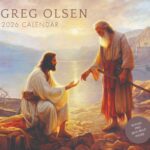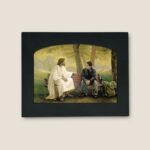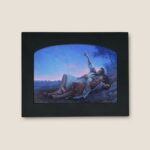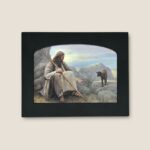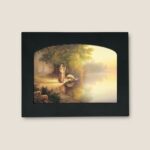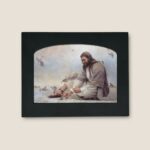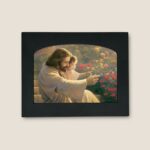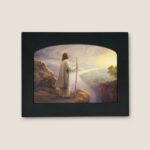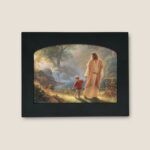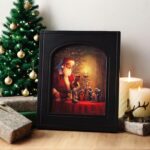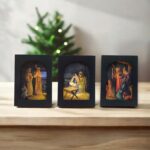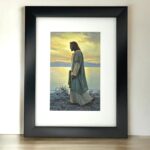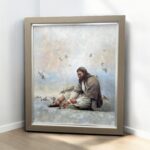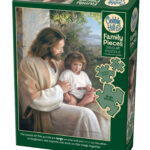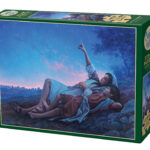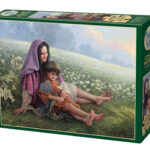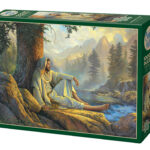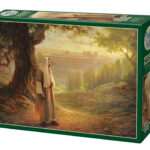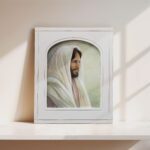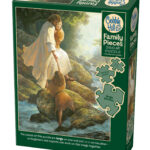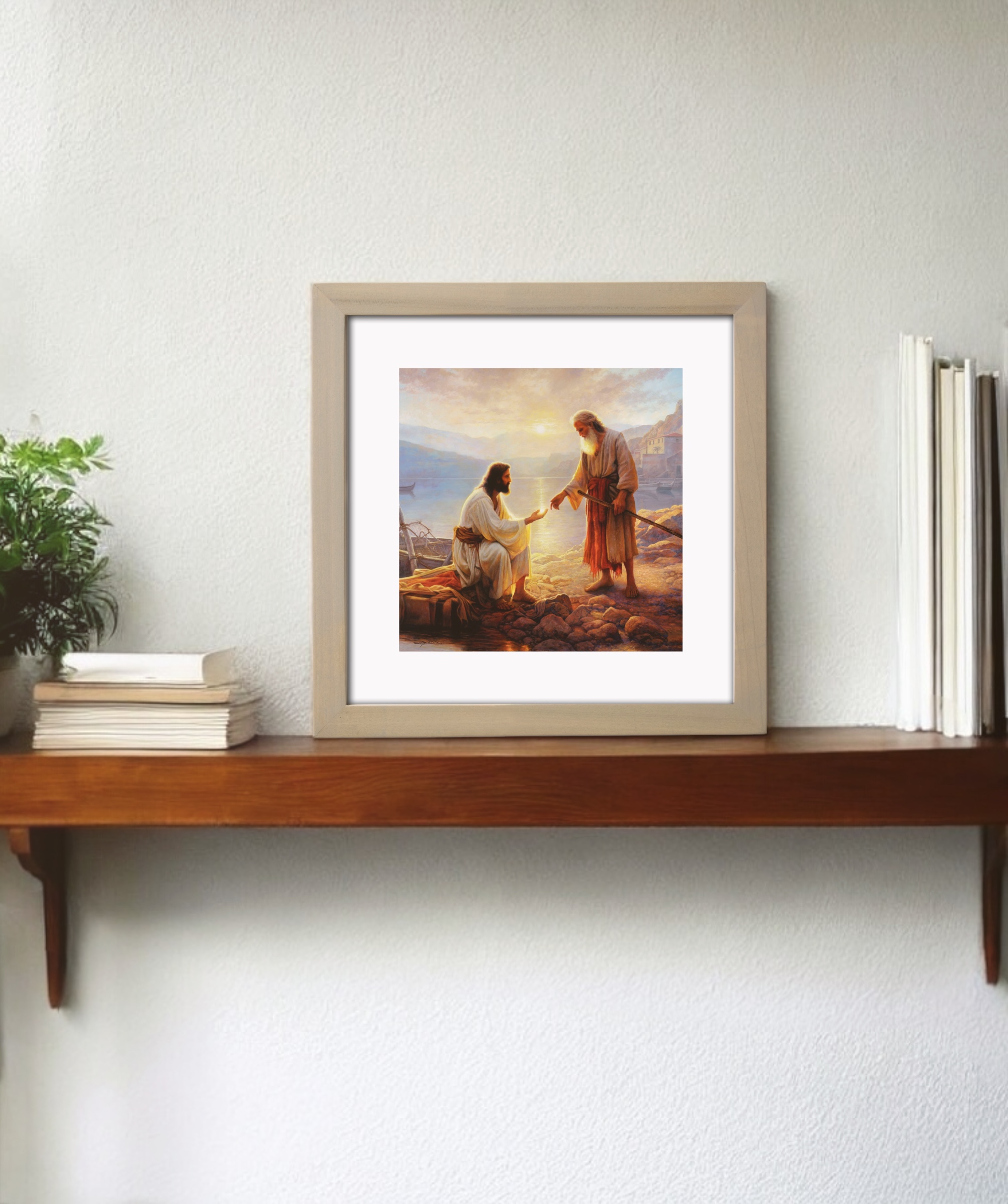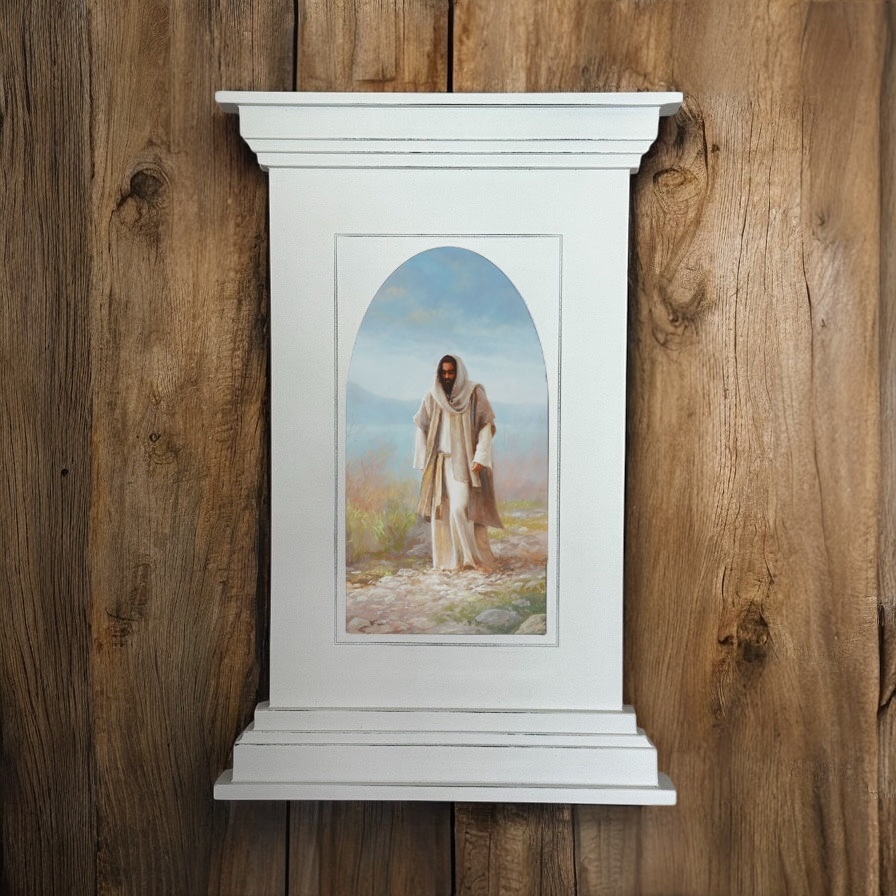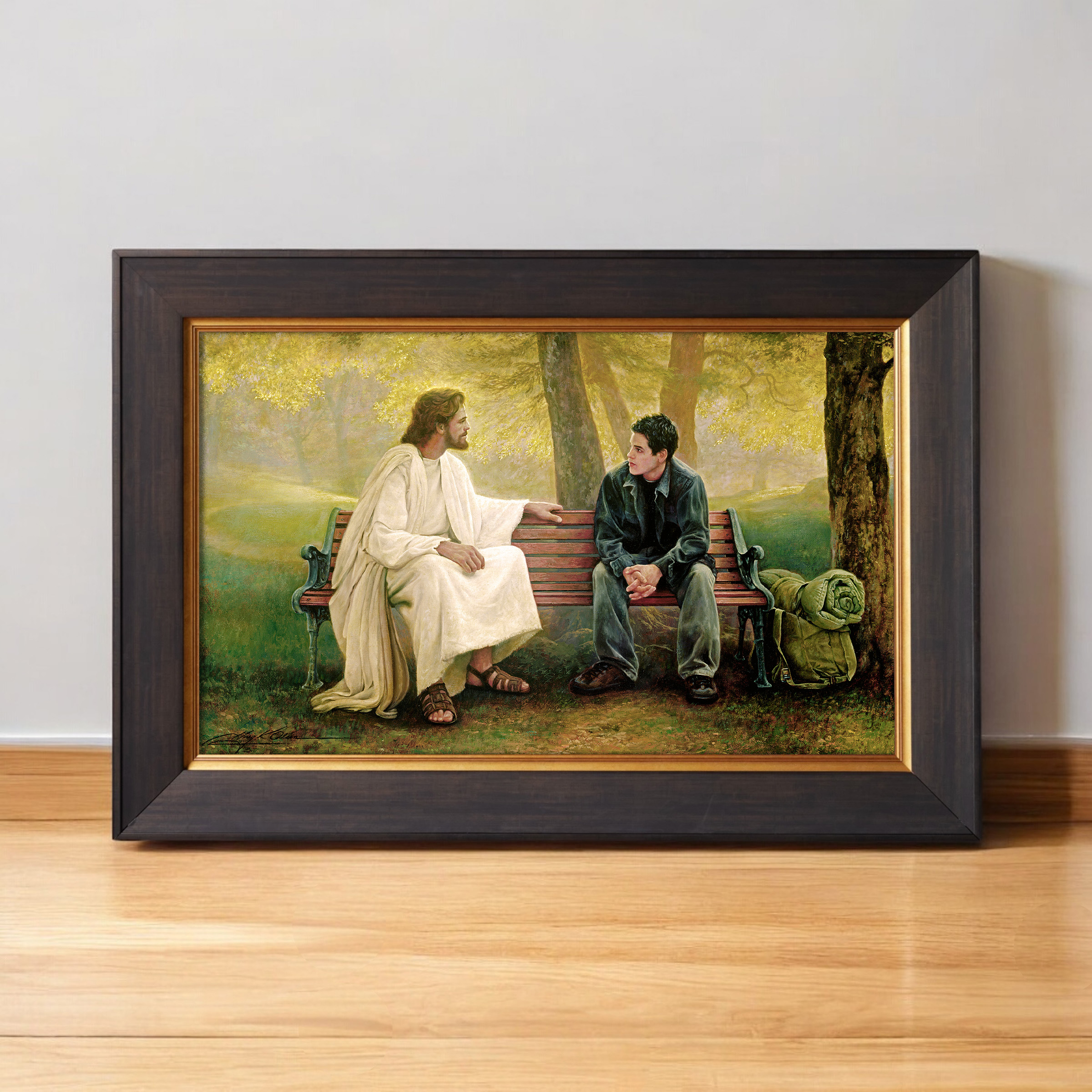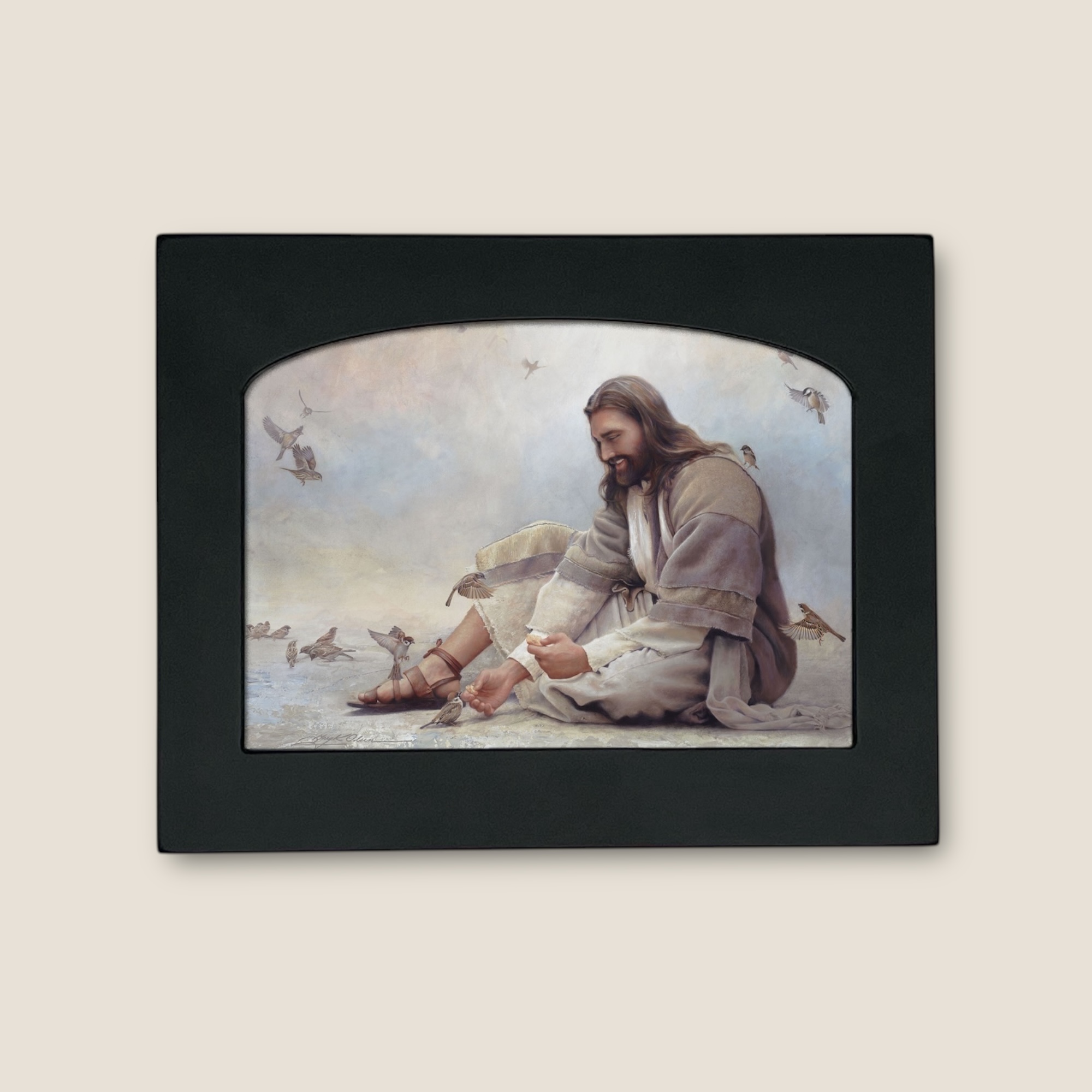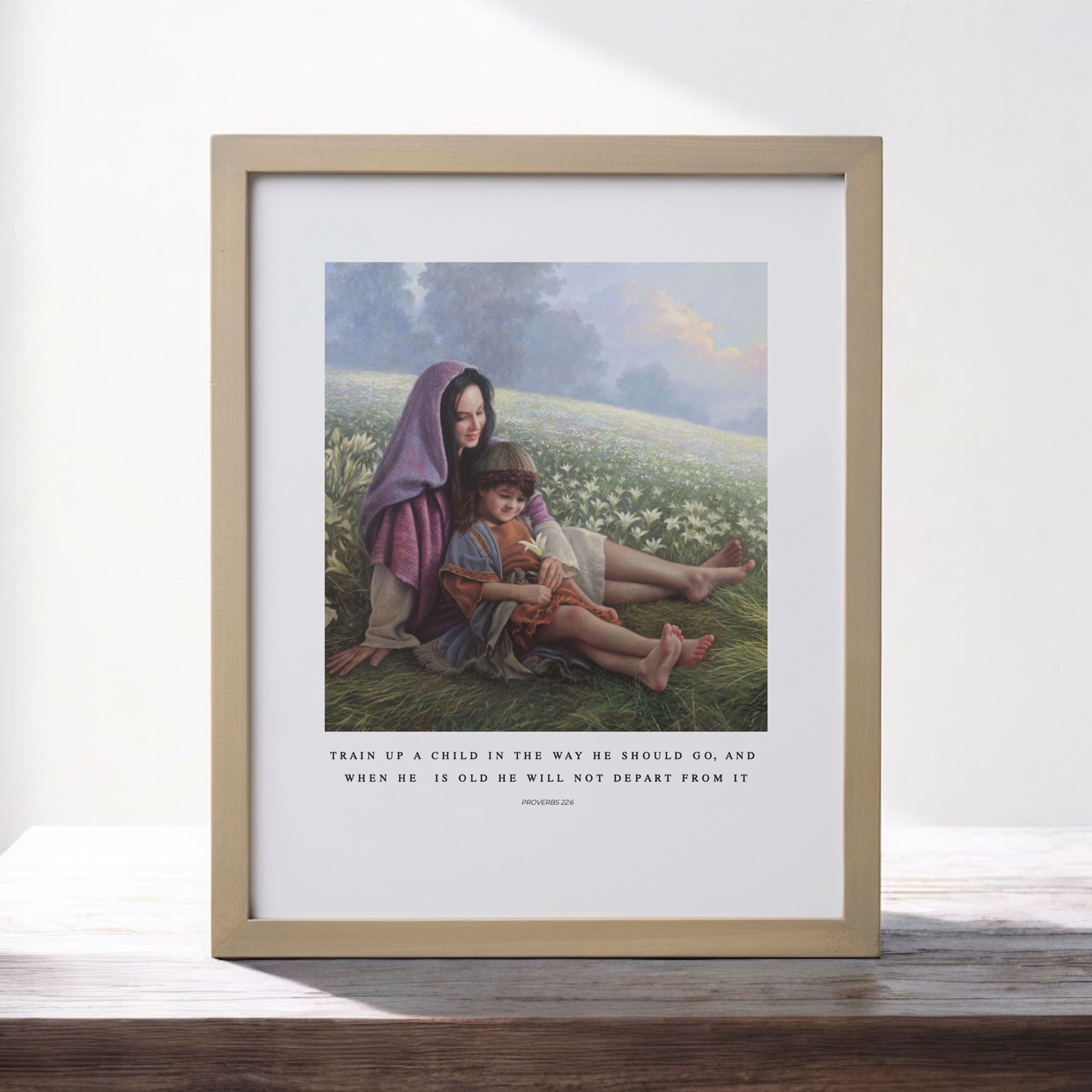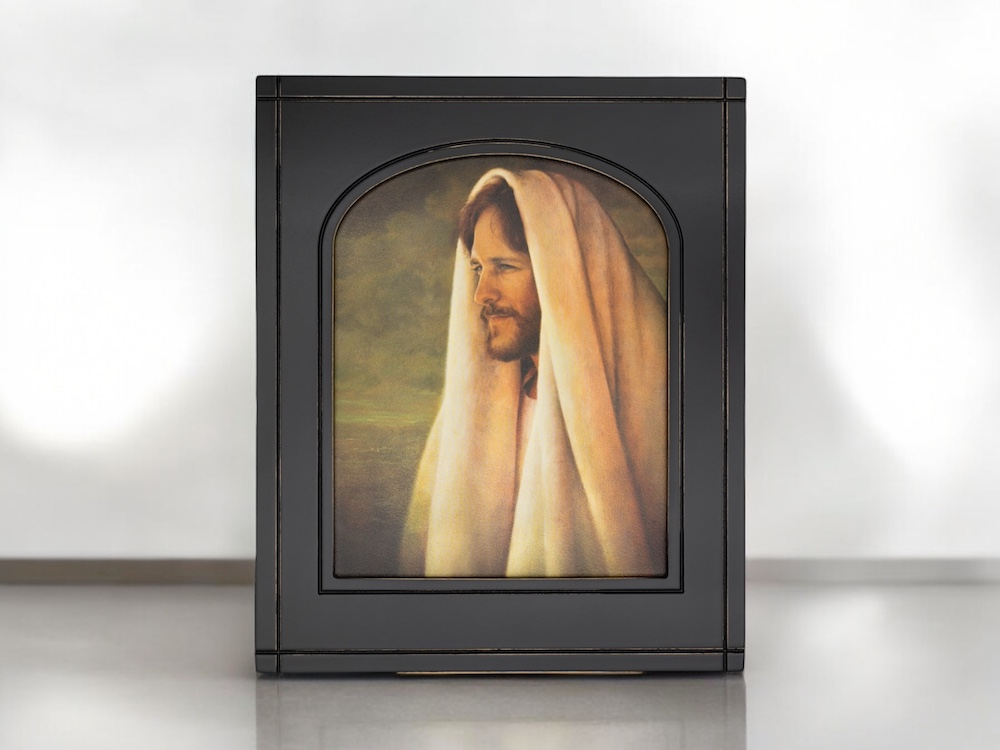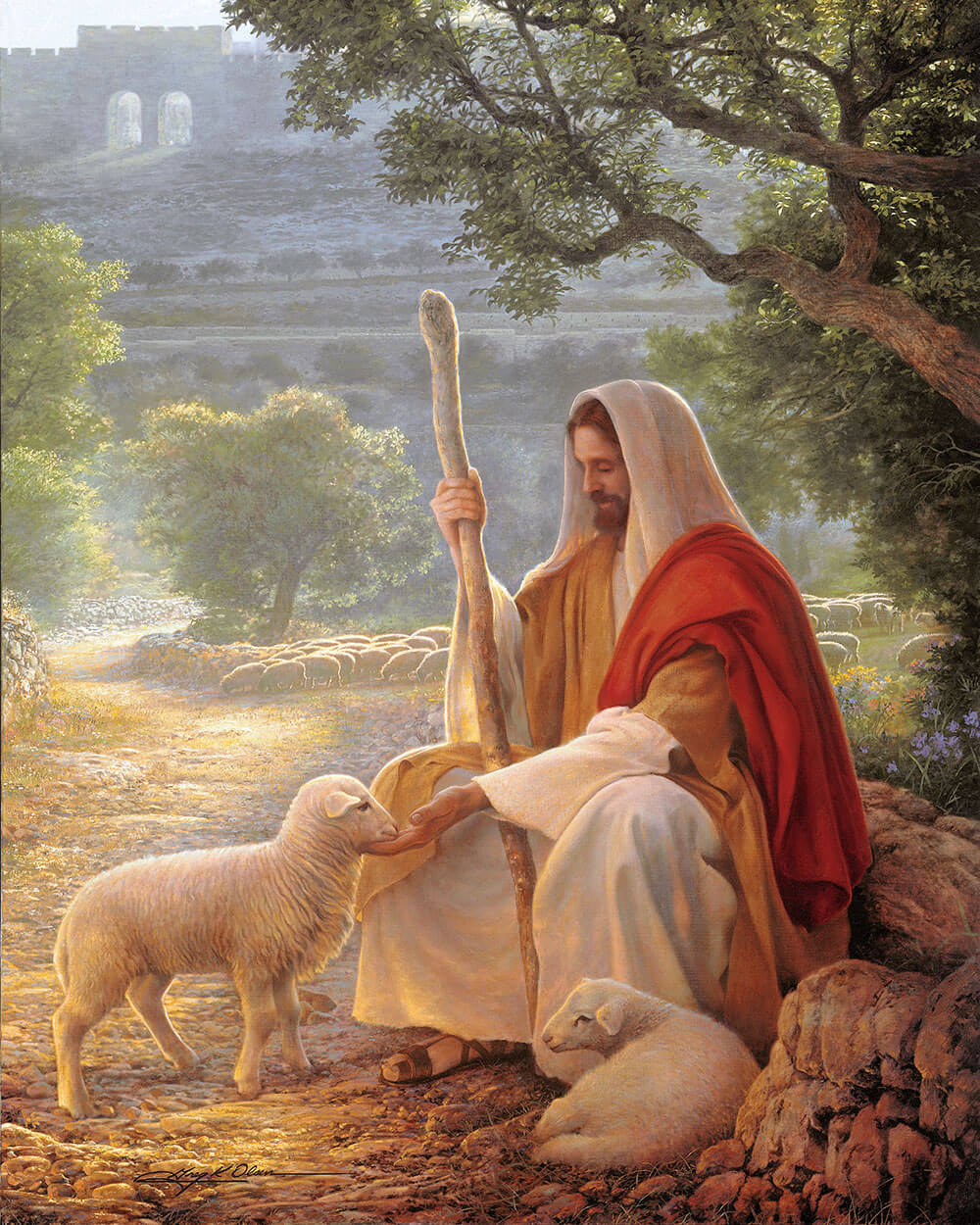The shepherd and his flock have been ever-present symbols of the Lord and the people of His pasture. The ancient role of a shepherd was much more than an assignment to herd sheep. The shepherd loved his sheep, he knew them, named them, provided for and protected them. In return, the sheep responded to their shepherd and recognized his voice. His call alone could bring them back from their wanderings in unfamiliar paths. If lambs were lost, he sought them out and brought them back to the fold.
Those who hear the Master’s call and then seek to follow in His path will find Him and there enjoy contentment and safety at His feet.
There are a couple of obscure but intriguing details in this painting. One is the image of the Golden Gate or Eastern Gate which once served as an entrance to the City of Jerusalem. According to ancient Christian tradition this was the site where Jesus entered the city on a white donkey on the Sunday before passover. In 1540 the Ottoman’s built the present walls of Jerusalem and a year later sealed the gate in defiance of the Jewish tradition that the Messiah would yet enter through that gate. Christian tradition asserts that this gate will remain closed until Jesus returns again to open it and enter the city. This painting alludes to the realization of that tradition. Another small detail in this painting is found in the background just to the right of the figure of Jesus. There is a single sheep amongst the herd which represent the one which is “lost no more.” Having at one time been lost, simply following the herd with heads down, this one sheep finally looks up. Perhaps he heard the call of the Good Shepherd, recognized his voice and is prepared to take the first step in a new direction.
by Greg Olsen










